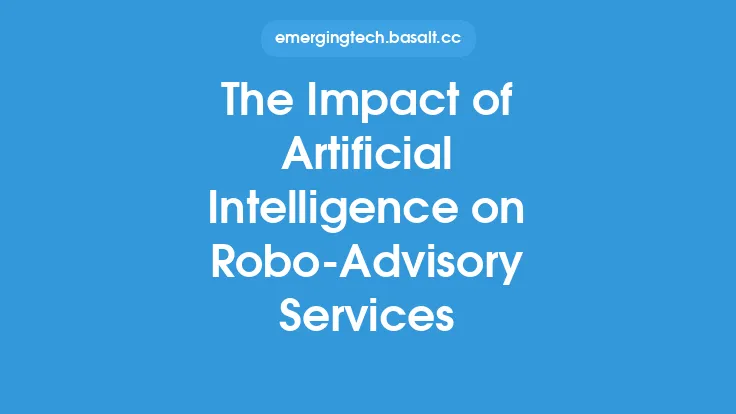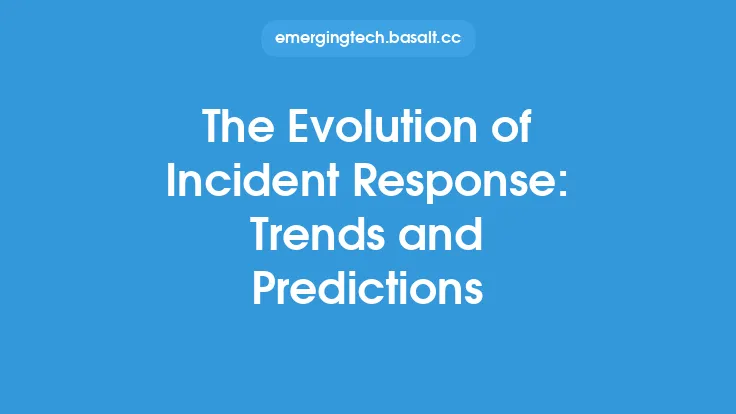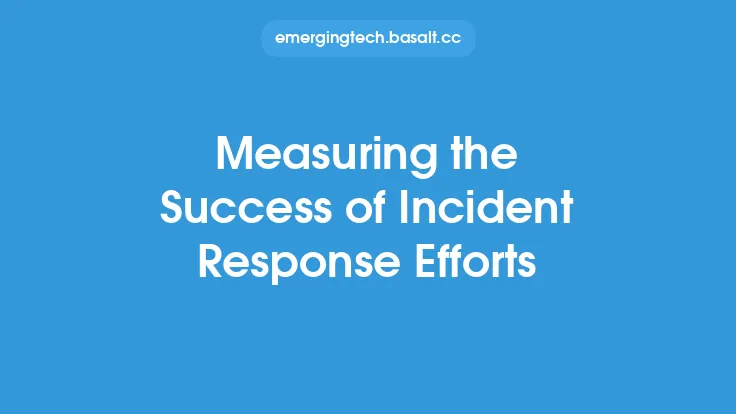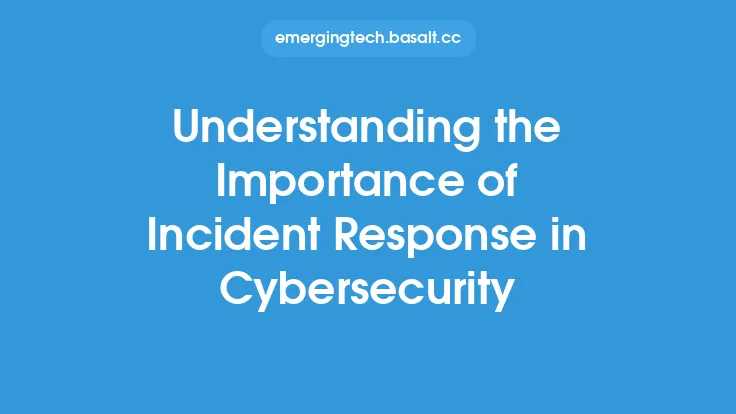The increasing complexity and frequency of cyber threats have made incident response a critical component of any organization's cybersecurity strategy. As the threat landscape continues to evolve, the use of artificial intelligence (AI) is becoming more prevalent in incident response, enabling organizations to respond more quickly and effectively to security incidents. In this article, we will explore the impact of artificial intelligence on incident response, including its benefits, challenges, and future directions.
Introduction to Artificial Intelligence in Incident Response
Artificial intelligence refers to the use of computer systems that can perform tasks that typically require human intelligence, such as learning, problem-solving, and decision-making. In the context of incident response, AI can be used to analyze vast amounts of data, identify patterns, and make predictions about potential security threats. AI-powered systems can also automate many of the tasks involved in incident response, such as data collection, analysis, and reporting, freeing up human incident responders to focus on more complex and high-value tasks.
Benefits of Artificial Intelligence in Incident Response
The use of artificial intelligence in incident response offers several benefits, including improved speed and accuracy, enhanced threat detection, and increased efficiency. AI-powered systems can analyze vast amounts of data in real-time, identifying potential security threats and alerting incident responders to take action. This enables organizations to respond more quickly to security incidents, reducing the risk of data breaches and minimizing downtime. Additionally, AI-powered systems can learn from experience, improving their ability to detect and respond to security threats over time.
Artificial Intelligence Techniques Used in Incident Response
Several AI techniques are used in incident response, including machine learning, natural language processing, and expert systems. Machine learning involves training algorithms on large datasets to enable them to learn patterns and make predictions about future events. Natural language processing involves the use of algorithms to analyze and understand human language, enabling AI-powered systems to extract insights from unstructured data sources such as incident reports and threat intelligence feeds. Expert systems involve the use of rule-based systems to mimic the decision-making abilities of human incident responders, enabling AI-powered systems to provide automated guidance and support.
Challenges of Implementing Artificial Intelligence in Incident Response
While the use of artificial intelligence in incident response offers several benefits, there are also several challenges to implementation. One of the main challenges is the need for high-quality data, as AI-powered systems are only as good as the data they are trained on. Additionally, AI-powered systems require significant computational resources, which can be a challenge for organizations with limited budgets or infrastructure. Furthermore, there is a risk of over-reliance on AI-powered systems, which can lead to a lack of human oversight and review, potentially resulting in false positives or false negatives.
Future Directions for Artificial Intelligence in Incident Response
The use of artificial intelligence in incident response is likely to continue to evolve in the future, with several emerging trends and technologies on the horizon. One of the main trends is the use of deep learning, a type of machine learning that involves the use of neural networks to analyze complex data sets. Deep learning has the potential to significantly improve the accuracy and speed of threat detection, enabling organizations to respond more quickly and effectively to security incidents. Another trend is the use of autonomous systems, which involve the use of AI-powered systems to automate the entire incident response process, from detection to remediation.
Best Practices for Implementing Artificial Intelligence in Incident Response
To get the most out of artificial intelligence in incident response, organizations should follow several best practices. First, they should ensure that they have high-quality data, as AI-powered systems are only as good as the data they are trained on. Second, they should implement a phased approach to implementation, starting with small-scale pilots and gradually scaling up to larger deployments. Third, they should ensure that they have the necessary computational resources and infrastructure to support AI-powered systems. Finally, they should ensure that they have a clear understanding of the limitations and potential biases of AI-powered systems, and implement appropriate oversight and review processes to mitigate these risks.
Conclusion
The use of artificial intelligence in incident response has the potential to significantly improve the speed and accuracy of security incident response, enabling organizations to respond more quickly and effectively to security threats. While there are several challenges to implementation, including the need for high-quality data and significant computational resources, the benefits of AI-powered incident response make it an essential component of any organization's cybersecurity strategy. By following best practices and staying up-to-date with the latest trends and technologies, organizations can harness the power of AI to improve their incident response capabilities and reduce the risk of data breaches and downtime.





